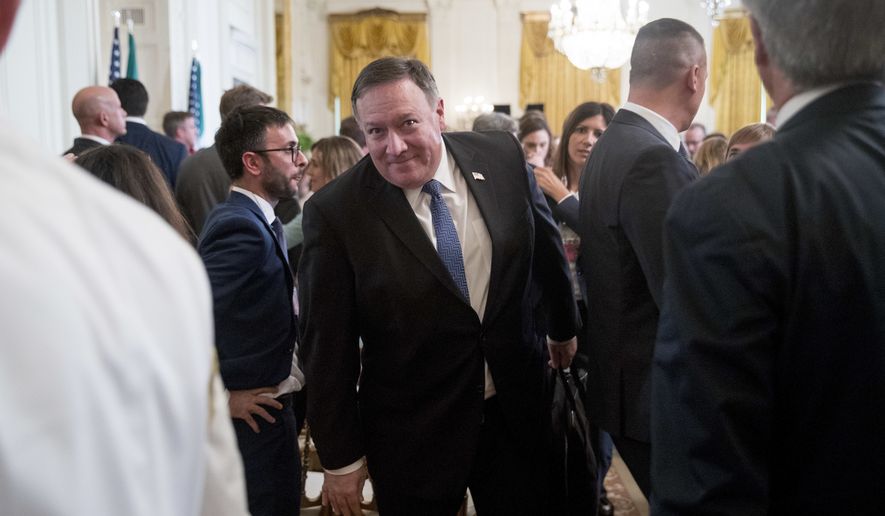Secretary of State Mike Pompeo touted plans Monday for a major increase in U.S. public and private investment across Asia to fund technology, infrastructure and energy initiatives, as China floods the region with its own investment and infrastructure projects.
While U.S. officials downplayed the notion that the Trump administration’s evolving “Indo-Pacific strategy” aims to undercut China’s expanding influence, Mr. Pompeo stressed in speech to American business leaders that Washington’s goal is to foster “market-driven” growth among allies in the region.
China’s own fast-moving “One Belt One Road” initiative has pumped hundred billions of dollars worth of government financing into infrastructure contracts in exchange for access to resources across Asia. By some estimates, the program championed by President Xi Jinping has identified development “corridors” in some 68 countries in Asia, Europe, Africa and Latin America with an upper price tag of all-in investment as high as $8 trillion.
Mr. Pompeo, who is slated to visit to Malaysia, Singapore and Indonesia later this week, announced Monday some $113 million in new U.S. government investments as a “down payment on a new era” for the U.S. in the region Monday. But he focused his remarks on the expanded role the Trump administration wants the U.S. private sector to play in the coming years — and its contrast with Beijing’s approach.
“Our strategy seeks to catalyze American businesses to do what they do best,” the secretary of state said in remarks at the Indo-Pacific Business Forum, an event hosted in Washington by the U.S. Chamber of Commerce. “With American companies, citizens around the world know that what you see is what you get: honest contracts, honest terms, and no need for off-the-books mischief.”
Government spending by itself “can never address the Indo-Pacific’s needs,” he added.
His comments come amid projections of massive growth potential for the Indo-Pacific — a region that stretches from India’s west coast and through Southeast Asia.
The U.S. Chamber of Commerce projects that Asian nations have the potential to create 50 percent of global GDP in the coming decades. But for such potential to become a reality, “countries of the Indo-Pacific will need to attract nearly $26 trillion in capital to fund their energy and infrastructure needs,” according to the chamber’s website.
While the Trump White House has focused significant attention on Asia — from the president’s pursuit of diplomacy with North Korea to expanding U.S. military operations in the region — the administration has faced criticism for lacking a coherent long-term plan for countering China’s economic strategy.
Mr. Trump’s tariffs against not only China but key U.S. allies in Asia and his withdrawal from the Trans-Pacific Partnership (TPP) trade deal have caused uncertainty among many over Washington’s long-term commitment to the region. Some observers said Mr. Pompeo’s speech was squarely aimed at quelling that unease.
“Secretary Pompeo’s remarks today about the importance of the Indo-Pacific region remaining free and open will be well received in most of Asia,” said Troy Keller, a long-time global business attorney with the international law firm Dorsey & Whitney, who acknowledged that “the U.S. withdrawal from the TPP was a disappointment to countries seeking a counterweight to China’s growth.”
State Department Senior Policy Adviser Brian Hook insisted Washington is not competing with Beijing’s mostly state-backed infrastructure projects in Asia. Washington “welcomed” Chinese contributions to regional development, but that “our way of doing things is to keep the government’s role very modest,” Mr. Hook told the Reuters news service ahead of Mr. Pompeo’s remarks.
He also said U.S. officials want China to adhere to international standards on transparency, the rule of law and sustainable financing, the news agency reported.
• Guy Taylor can be reached at gtaylor@washingtontimes.com.




Please read our comment policy before commenting.